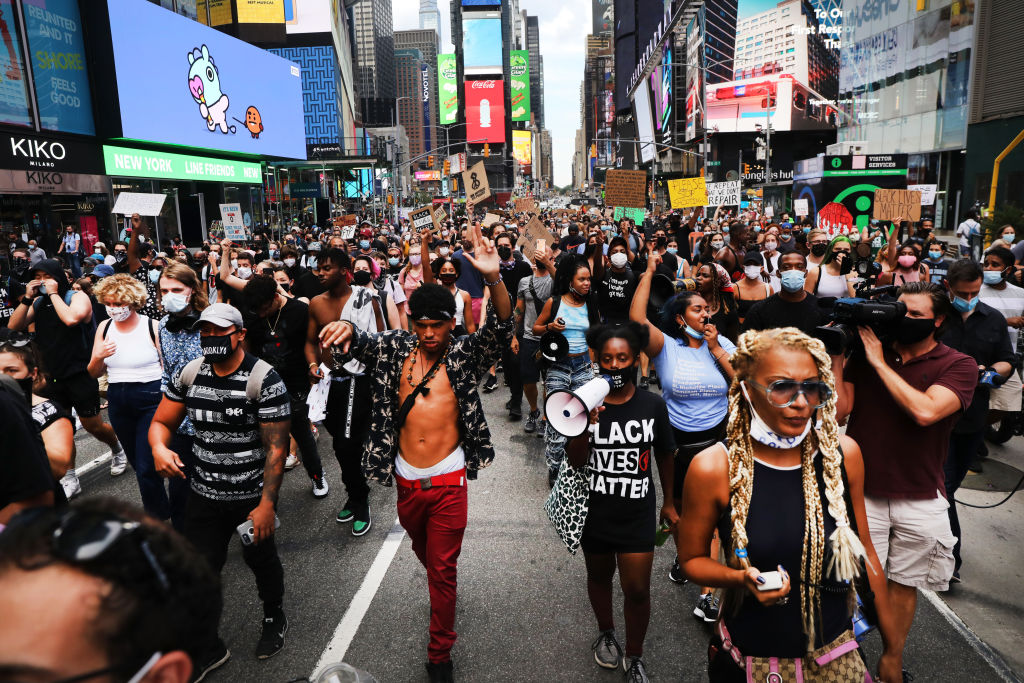
The vast majority of Black Lives Matter protests—more than 93%—have been peaceful, according to a new report published Thursday by a nonprofit that researches political violence and protests across the world.
The Armed Conflict Location & Event Data Project (ACLED) analyzed more than 7,750 Black Lives Matter demonstrations in all 50 states and Washington D.C. that took place in the wake of George Floyd’s death between May 26 and August 22.
Their report states that more than 2,400 locations reported peaceful protests, while fewer than 220 reported “violent demonstrations.” The authors define violent demonstrations as including “acts targeting other individuals, property, businesses, other rioting groups or armed actors.” Their definition includes anything from “fighting back against police” to vandalism, property destruction looting, road-blocking using barricades, burning tires or other materials. In cities where protests did turn violent—these demonstrations are “largely confined to specific blocks,” the report says.
The ACLED report includes protests toppling statues of “colonial figures, slave owners and Confederate leaders” as violent incidents. “Since Floyd’s killing, there have been at least 38 incidents in which demonstrators have significantly damaged or torn down memorials around the country,” the report states.
Still, many people continue to believe that Black Lives Matter protests are largely violent—contrary to the report’s findings. ACLED highlights a recent Morning Consult poll in which 42% of respondents believe “most protesters (associated with the BLM movement) are trying to incite violence or destroy property.” ACLED suggests this “disparity stems from political orientation and biased media framing… such as disproportionate coverage of violent demonstrations.”
U.S.-based ACLED is funded by the State Department’s Bureau of Conflict and Stabilization Operations as well as foreign governments and other organizations, including the Dutch Ministry of Foreign Affairs, the German Federal Foreign Office, the Tableau Foundation, the International Organization for Migration, and The University of Texas at Austin. It relied on data collection from the U.S. Crisis Monitor—a joint project led by ACLED and Princeton University’s Bridging Divides Initiative—that tracks and publishes real-time data on political violence and demonstrations in the U.S in order to “establish an evidence base from which to identify risks, hotspots and available resources to empower local communities in times of crisis.”
ACLED also highlights a “violent government response,” in which authorities “use force more often than not” when they are present at protests and that they “disproportionately used force while intervening in demonstrations associated with the BLM movement, relative to other types of demonstrations.” The report also references “dozens of car-ramming attacks” on protesters by various individuals, some of whom have ties to hate groups like the Ku Klux Klan.
ACLED warns in the report that the U.S. “is at heightened risk of political violence and instability going into the 2020 general election,” citing trends in mass shootings, violent hate crimes and police killings. The authors of the report say the Trump administration has exacerbated tensions caused by racial inequality and police brutality. President Donald Trump and high-ranking members of his administration have frequently generalized protesters as violent anarchists.
More Must-Reads from TIME
- Why Biden Dropped Out
- Ukraine’s Plan to Survive Trump
- The Rise of a New Kind of Parenting Guru
- The Chaos and Commotion of the RNC in Photos
- Why We All Have a Stake in Twisters’ Success
- 8 Eating Habits That Actually Improve Your Sleep
- Welcome to the Noah Lyles Olympics
- Get Our Paris Olympics Newsletter in Your Inbox
Write to Sanya Mansoor at sanya.mansoor@time.com